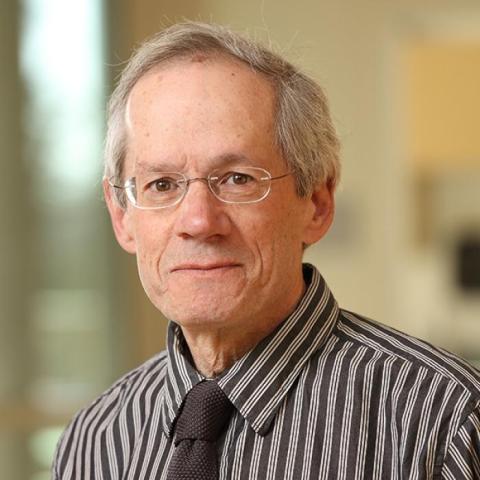- People
- Research
- Graduate
-
Undergraduate
- Prospective & Transfer Students
- General Chemistry Options
- Policies
- Tutors
- Pre-Health
- Undergraduate Advisors
-
Chemistry Major
- Process for Declaring a Major, Minor, DMP, or ACS Certification
- B.A. in Chemistry
- B.S. Chemistry
- B.S. Specialization in Biochemistry
- B.S. Specialization in Chemical Education
- B.S. Specialization in Chemical Physics
- B.S. Specialization in Environmental Chemistry
- B.S. Specialization in Materials Science
- B.A./M.S. or B.S./M.S. in Chemistry ("3+1" Degree Option)
- Undergraduate Research
- Distinguished Majors Program
- Minor
- Forms
- Study Abroad
- Undergraduate FAQs
- Undergraduate Resources
- Safety
- Seminars
- Newsletter
David S. Cafiso
Alfred Burger Professor of Chemistry and Molecular Physiology and Biological Physics
Research Interests
Biophysical chemistry; membrane proteins and cell signaling
Office Address/Hours
Room 188A, Chemistry Addition
Education
A.B. University of California, Berkeley, 1974
Ph.D. University of California, Berkeley, 1979
Postdoctoral Fellow, Stanford University, 1980
Awards and Honors
- David Cafiso named the 2013 Piette Lecturer
- 2010 Fellow of the Biophysical Society Award
- Camille and Henry Dreyfus Foundation Award for New Faculty in Chemistry, 1981
- Jane Coffin Childs Foundation Fellowship, 1979-1981
Membrane Proteins and Cell Signaling
Membranes and membrane proteins participate in some of the most important and interesting cellular processes. Energy transduction, cell signaling, membrane excitability, secretion and immune recognition are examples of a few of the processes mediated by membrane proteins. However, the molecular mechanisms by which lipids and membrane proteins accomplish these tasks are largely unknown. We primarily use EPR spectroscopy and high-resolution NMR to investigate the structure and function of membrane proteins.
Protein – membrane surface interactions
Attachment is critical for cell-signaling because it controls protein-protein interactions and the access of enzymes to lipid substrates. We are currently determining the structure and electrostatic interactions made by highly positively charged protein motifs, such as those from MARCKS (the myristoylated alanine rich C-kinase substrate) with negatively charged lipid surfaces. In addition to regulating membrane attachment, these positively charged motifs function to sequester phosphatidylinositol 4,5, bisphosphate (PIP2), and regulate the activity of this phosphorylated inositol lipid within the cytoplasmic membrane. We are also determining the membrane interactions made by protein domains such as C2 domains. C2 domains perform critical roles in membrane trafficking, membrane fusion and membrane repair, and defects in these domains result in forms of muscular dystrophy and deafness.
Active transport across membranes
We are determining the molecular mechanisms by which BtuB transports vitamin B12 across the outer membrane of Escherichia coli. This protein is homologous to FecA, FepA and FhuA, outer membrane iron transport proteins that presumably function by similar mechanisms. These proteins belong to a class of transport proteins for which high-resolution structural models have been obtained, and they are extremely important for the survival of some bacterial pathogens.
Recent Publications
Allosteric control of syntaxin 1a by Munc18-1: characterization of the open and closed conformations of syntaxin. Dawidowski D, Cafiso DS. Biophys J. 104:1585-94 (2013).
Monomeric TonB and the Ton box are required for the formation of a high-affinity transporter-TonB complex. Freed DM, Lukasik SM, Sikora A, Mokdad A, Cafiso DS. Biochemistry. 52:2638-48 (2013).
Taking the pulse of protein interactions by EPR spectroscopy. Cafiso DS. Biophys J. 103:2047-8 (2012).
Ligand-induced structural changes in the Escherichia coli ferric citrate transporter reveal modes for regulating protein-protein interactions. Mokdad A, Herrick DZ, Kahn AK, Andrews E, Kim M, Cafiso DS. J Mol Biol. 423:818-30 (2012).
Solution structure of the ESCRT-I and -II supercomplex: implications for membrane budding and scission. Boura E, Różycki B, Chung HS, Herrick DZ, Canagarajah B, Cafiso DS, Eaton WA, Hummer G, Hurley JH. Structure. 20:874-86 (2012).
